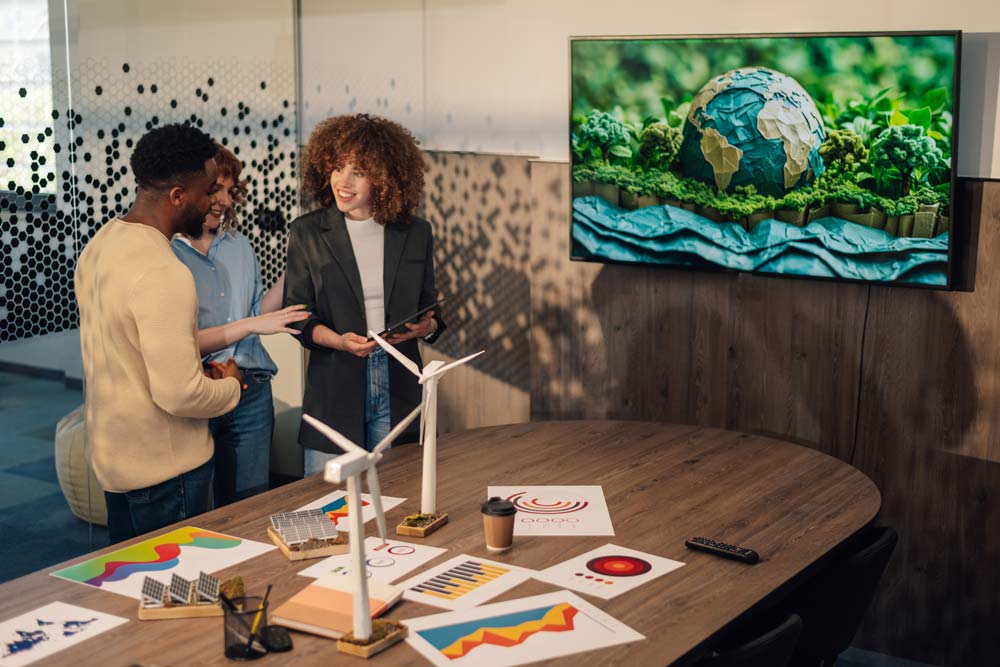Introduction
The Paris Agreement of 2015, a cornerstone of 21st-century international climate policy, commits signatory states to limit global warming to well below two degrees Celsius above pre-industrial levels (UNFCCC, 2015). In response, Germany aims for climate neutrality by 2045, targeting a 65% reduction in greenhouse gas emissions by 2030 compared to 1990 levels (Bundes-Klimaschutzgesetz, § 3 Abs. 1-2). Achieving these ambitious goals necessitates a profound transformation of the energy sector, where hydrogen plays a pivotal role as a versatile energy carrier. Hydrogen enables the integration of renewable energy across sectors such as industry, transport, and heating, where direct electrification is often infeasible (BMWi, 2020). This essay explores the economic challenges of hydrogen production in Germany, focusing on the Levelized Cost of Hydrogen (LCOH) at the Lehrte site. By comparing two electricity procurement models—direct coupling with renewable plants (Direct Wire) and Power Purchase Agreements (PPA)—this analysis aims to identify key cost drivers and assess the economic potential of a hydrogen electrolysis plant at Lehrte.
Hydrogen’s Systemic Role in the Energy Transition
Hydrogen is increasingly recognised as a linchpin in decarbonising hard-to-abate sectors. In industry, it serves as a reducing agent in steel production and a chemical feedstock for ammonia and methanol synthesis. In transport, hydrogen can be converted into synthetic fuels, while in energy systems, it offers long-term storage solutions and supports high-temperature industrial processes (Wietschel et al., 2021). Furthermore, waste heat from electrolysis can be utilised in district heating networks, enhancing overall efficiency. Germany’s ambition to achieve 10 gigawatts of electrolysis capacity by 2030 underlines the urgency of scaling up hydrogen production (BMWK, 2023). However, the economic viability of such projects remains uncertain, with production costs for green hydrogen ranging between €6 and €11 per kilogram, influenced by factors like electricity prices, investment costs, and plant efficiency (European Hydrogen Observatory, n.d.).
Economic Challenges and Cost Factors
The economic operation of electrolysis plants hinges on electricity costs, which account for a significant portion of the LCOH. Other variables, including capital expenditure, operational efficiency, and capacity utilisation, further complicate cost projections. Local conditions, such as access to renewable energy and grid infrastructure, also play a critical role. Lehrte, located in a region with growing renewable energy integration and established infrastructure, offers a promising case study (Stadt Lehrte, 2022). Yet, the question remains whether these advantages can translate into competitive production costs, especially given the variability in electricity procurement models.
Comparing Electricity Procurement Models at Lehrte
This analysis examines two electricity sourcing strategies for hydrogen production at Lehrte: Direct Wire coupling with renewable generation plants and PPAs for long-term electricity contracts. Direct Wire models ensure immediate access to renewable energy, potentially reducing costs by bypassing grid fees and ensuring high utilisation rates during peak renewable output. However, they require proximity to generation facilities and may face intermittency issues. Conversely, PPAs provide price stability over extended periods, mitigating exposure to volatile market rates, though they may involve higher overall costs due to contractual premiums (Matthes & Brauer, 2025). Preliminary assessments suggest that Direct Wire setups could be advantageous at Lehrte, given the region’s renewable energy potential, though detailed cost modelling is needed to confirm this hypothesis. Indeed, the choice of model will likely depend on local grid conditions and long-term policy support.
Conclusion
In conclusion, hydrogen represents a transformative element in Germany’s pursuit of climate neutrality by 2045, facilitating decarbonisation across multiple sectors. However, economic barriers, particularly high production costs, continue to challenge its widespread adoption. At Lehrte, factors such as renewable energy availability and infrastructure offer potential for cost-effective hydrogen production, but the choice between Direct Wire and PPA models significantly impacts the LCOH. This analysis highlights the need for tailored policy measures, such as subsidies or grid fee exemptions, to enhance economic viability. Ultimately, understanding these cost dynamics is crucial for scaling hydrogen infrastructure and ensuring its role in the broader energy transition. Further research into local conditions and innovative financing mechanisms could arguably provide deeper insights into optimising hydrogen’s contribution to Germany’s climate goals.
References
- Bundesministerium für Wirtschaft und Energie (BMWi). (2020) Die Nationale Wasserstoffstrategie. BMWi.
- Bundesministerium für Wirtschaft und Klimaschutz (BMWK). (2023) Fortschrittsbericht zur Nationalen Wasserstoffstrategie. BMWK.
- European Hydrogen Observatory. (n.d.) Cost of Hydrogen Production. European Hydrogen Observatory.
- Matthes, F. C. & Brauer, J. (2025) Wirtschaftlichkeit der Wasserstoffproduktion in Deutschland. Forschungsinstitut für Nachhaltigkeit.
- Stadt Lehrte. (2022) Energieinfrastruktur und Erneuerbare Energien in Lehrte. Stadtverwaltung Lehrte.
- United Nations Framework Convention on Climate Change (UNFCCC). (2015) Paris Agreement. UNFCCC.
- Wietschel, M., et al. (2021) Wasserstoff in der Energiewende: Potenziale und Herausforderungen. Fraunhofer-Institut für System- und Innovationsforschung.


